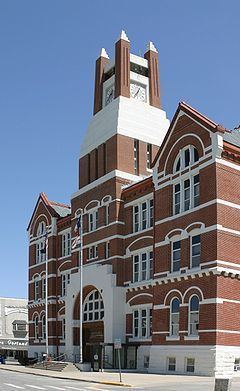Founded 1843 Area 1,484 km² Unemployment rate 3.7% (Apr 2015) | Named for Mahaska Population 22,417 (2013) University William Penn University | |
 | ||
Rivers South Skunk River, Muchakinock Creek, Des Moines River Points of interest Lake Keomah State Park, Mahaska Bowl, Edmundson Park, Tassel Ridge Winery, Nelson Pioneer Farm & M | ||
2011 abandoned mine land reclamation award westercamp aml project mahaska county iowa
Mahaska County is a county located in the U.S. state of Iowa. As of the 2010 census, the population was 22,335. The county seat is Oskaloosa.
Contents
- 2011 abandoned mine land reclamation award westercamp aml project mahaska county iowa
- Map of Mahaska County IA USA
- History
- Geography
- Major highways
- Adjacent counties
- 2010 census
- 2000 census
- Unincorporated communities
- Population ranking
- References
Map of Mahaska County, IA, USA
Mahaska County comprises the Oskaloosa, IA Micropolitan Statistical Area.
History
Mahaska County was formed on February 17, 1843. The county has been self-governing since February 5, 1844. It was named after Chief Mahaska of the Iowa tribe. The county was the first in Iowa to have a sheriff and a justice of peace.
The first courthouse was completed in January, 1846. The second structure was put into use on February 27, 1886. The first school, a small log cabin one-half mile (ca. 2 km) east of Oskaloosa, was opened on September 16, 1844 and the Cumberland Presbyterian Church opened as the first church in 1846. On July 2, 1850, the first edition of the Iowa Herald was issued (today the Oskaloosa Herald). In 1864, the first tracks were laid through the county of the Des Moines Valley Railroad.
Coal mining was once a major industry in Mahaska County. In the 19th century, Muchakinock, about 5 miles (8.0 km) south of Oskaloosa, was probably the largest and most prosperous coal camp in Iowa.
Geography
According to the U.S. Census Bureau, the county has a total area of 573 square miles (1,480 km2), of which 571 square miles (1,480 km2) is land and 2.5 square miles (6.5 km2) (0.4%) is water.
Major highways
Adjacent counties
2010 census
The 2010 census recorded a population of 22,381 in the county, with a population density of 39.2051/sq mi (15.1372/km2). There were 9,766 housing units, of which 8,975 were occupied.
2000 census
As of the census of 2000, there were 22,335 people, 8,880 households, and 6,144 families residing in the county. The population density was 39 people per square mile (15/km²). There were 9,551 housing units at an average density of 17 per square mile (6/km²). The racial makeup of the county was 97.20% White, 0.64% Black or African American, 0.19% Native American, 0.86% Asian, 0.03% Pacific Islander, 0.30% from other races, and 0.78% from two or more races. 0.85% of the population were Hispanic or Latino of any race.
There were 8,880 households out of which 32.40% had children under the age of 18 living with them, 58.60% were married couples living together, 7.50% had a female householder with no husband present, and 30.80% were non-families. 26.60% of all households were made up of individuals and 12.40% had someone living alone who was 65 years of age or older. The average household size was 2.45 and the average family size was 2.96.
In the county, the population was spread out with 25.70% under the age of 18, 9.40% from 18 to 24, 26.80% from 25 to 44, 21.70% from 45 to 64, and 16.30% who were 65 years of age or older. The median age was 37 years. For every 100 females there were 99.10 males. For every 100 females age 18 and over, there were 96.90 males.
The median income for a household in the county was $37,314, and the median income for a family was $43,557. Males had a median income of $32,618 versus $23,192 for females. The per capita income for the county was $18,232. About 7.50% of families and 9.80% of the population were below the poverty line, including 11.70% of those under age 18 and 9.30% of those age 65 or over.
Unincorporated communities
Population ranking
The population ranking of the following table is based on the 2010 census of Mahaska County.
† county seat
